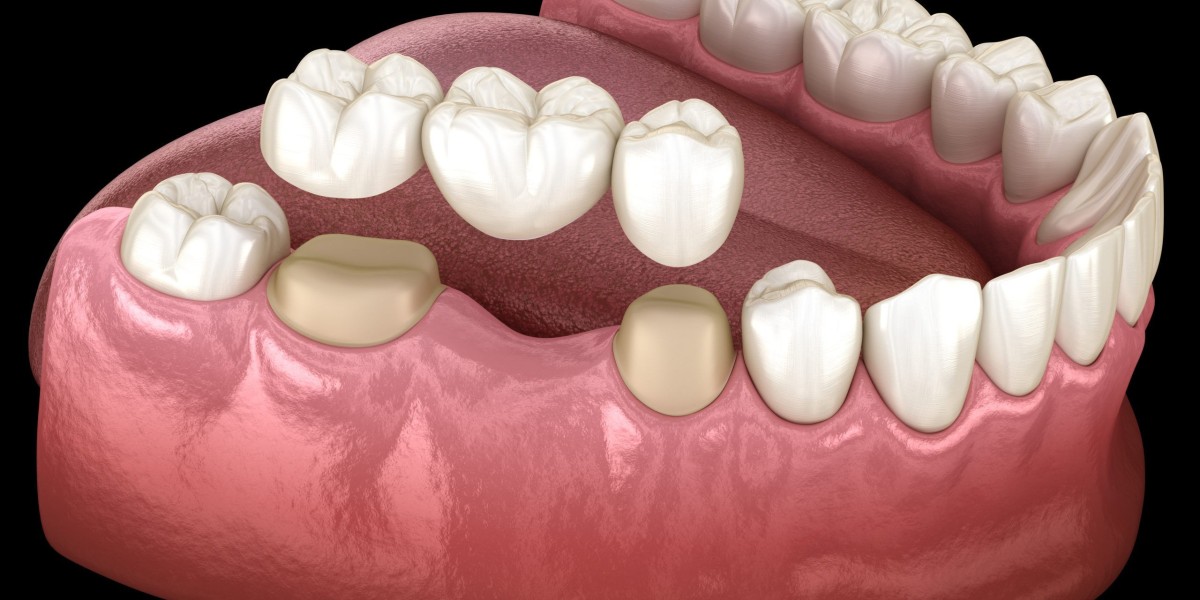Missing teeth can affect more than just your smile—they can impact your confidence, speech, and ability to chew properly. When a tooth is lost due to decay, injury, or age, it leaves a gap that can cause surrounding teeth to shift and your jawbone to weaken over time. That’s where dental bridges come in as a reliable, long-lasting solution to restore both function and appearance. Many people looking to rebuild their smiles turn to Dental Crowns and Bridges in Dubai for a natural-looking and durable result.
Understanding Dental Bridges
A dental bridge is a fixed restoration used to fill the space created by one or more missing teeth. It literally “bridges” the gap between teeth using crowns placed on either side of the missing tooth as anchors, known as abutments. The replacement tooth or teeth, called pontics, are then attached between these crowns.
Bridges can be made from a variety of materials, including porcelain, ceramic, and metal alloys. However, porcelain bridges are the most popular due to their natural look and ability to blend seamlessly with existing teeth. Modern dental technology has made it possible to design bridges that are not only functional but also aesthetically appealing, giving you a confident smile once again.
The Importance of Replacing Missing Teeth
Many people underestimate the impact of missing teeth, thinking it’s just a cosmetic concern. However, tooth loss can cause several oral health issues if left untreated. When a tooth is missing, the surrounding teeth begin to drift toward the empty space, leading to misalignment and bite problems. This can make chewing uncomfortable and even cause jaw pain over time.
Additionally, missing teeth can lead to bone loss in the jaw. The roots of natural teeth stimulate the jawbone, keeping it strong and dense. Without this stimulation, the bone can begin to deteriorate, altering the shape of your face and making you look older than you are. Replacing missing teeth with a bridge helps maintain your facial structure and prevents future dental complications.
Different Types of Dental Bridges
There are several types of dental bridges designed to suit different needs and conditions:
Traditional Bridge – The most common type, using crowns on both sides of the missing tooth to support the artificial one. It’s ideal when you have healthy teeth adjacent to the gap.
Cantilever Bridge – Used when there’s only one natural tooth beside the gap. It’s a less common option today but can be suitable in specific situations.
Maryland Bridge – A conservative option that uses a metal or porcelain framework bonded to the backs of the adjacent teeth instead of full crowns.
Implant-Supported Bridge – This type is anchored by dental implants instead of natural teeth. It’s an excellent choice for people missing multiple teeth in a row and provides outstanding stability and strength.
The Procedure for Getting a Dental Bridge
The process of getting a dental bridge typically takes two to three visits. During the first visit, the dentist prepares the adjacent teeth by reshaping them to hold the crowns. Then, impressions are taken to create a custom bridge that fits perfectly.
A temporary bridge is placed while the permanent one is being made. Once it’s ready, the temporary bridge is removed, and the permanent one is fitted, adjusted, and cemented securely. The result is a natural-looking restoration that feels comfortable and functions like your own teeth.
Benefits of Dental Bridges
Dental bridges offer numerous advantages beyond filling the gap in your smile. They restore your ability to chew and speak properly, prevent remaining teeth from shifting, and maintain the natural shape of your face. They also help distribute bite pressure evenly, reducing the risk of strain on other teeth.
In addition, modern bridges are crafted from high-quality materials designed to mimic the appearance of natural enamel. They reflect light similarly to real teeth, ensuring your smile looks natural and bright. With proper care, dental bridges can last for many years, providing a reliable solution to missing teeth.
Caring for Your Dental Bridge
Maintaining good oral hygiene is crucial for the longevity of your bridge. Brushing twice a day and flossing daily help prevent decay and gum disease around the bridge. Special floss threaders or interdental brushes can be used to clean underneath the pontic, ensuring that no food particles or plaque accumulate.
Regular dental checkups are also essential to monitor the condition of your bridge and ensure that the surrounding teeth remain healthy. Avoid chewing hard objects like ice or pens, as these can damage both natural teeth and restorations.
Smile with Confidence Again
Replacing missing teeth with a dental bridge is more than a cosmetic fix—it’s an investment in your oral health and overall well-being. A complete, healthy smile allows you to eat, speak, and laugh with confidence. Whether you’ve lost one tooth or several, a custom bridge can restore the balance and beauty of your smile while protecting your long-term dental health.
If you’ve been considering ways to restore your smile and improve functionality, now is the time to explore the benefits of Dental Crowns and Bridges Dubai for a lasting and natural-looking transformation.






